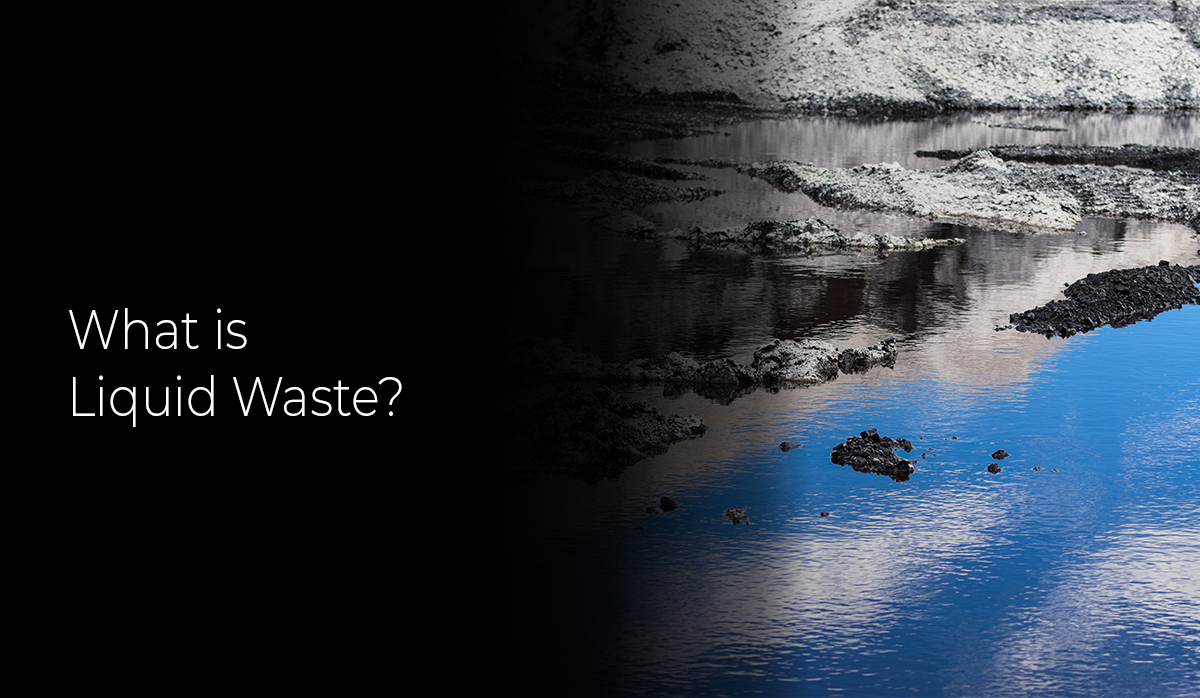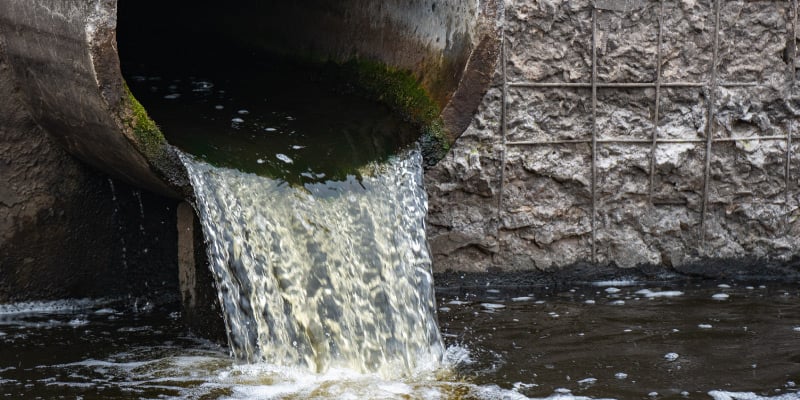Industrial Wastewater Treatment: Custom Solutions for Complicated Wastewater Challenges
Industrial Wastewater Treatment: Custom Solutions for Complicated Wastewater Challenges
Blog Article
Just How Liquid Garbage Disposal Functions: A Thorough Review of Methods and Technologies Used

Overview of Liquid Waste Types
The complexity of liquid waste types necessitates a complete understanding of their features and implications for disposal. Fluid waste can broadly be categorized right into several types, consisting of commercial, community, agricultural, and contaminated materials. Each group exhibits unique homes, calling for details monitoring techniques to minimize environmental and health and wellness dangers.
Industrial fluid waste stems from manufacturing procedures and frequently contains a series of impurities, such as hefty metals, solvents, and natural compounds. Community fluid waste, largely comprising wastewater from homes and commercial facilities, consists of natural issue, nutrients, and pathogens (industrial wastewater treatment). Agricultural fluid waste, including runoff from ranches, may contain fertilizers, chemicals, and pet waste, posing dangers to water high quality and environments
Dangerous fluid waste is characterized by its toxicity, reactivity, or potential to create harm. Understanding these diverse liquid waste kinds is vital for developing efficient disposal approaches and guaranteeing compliance with ecological policies.
Physical Therapy Techniques

Testing is the first action, where bigger bits and debris are eliminated from the liquid waste making use of displays or grates. In sedimentation storage tanks, heavier fragments settle at the bottom, forming a sludge layer, while the clarified fluid can be further dealt with.
Purification is an additional crucial method that entails passing the fluid with permeable materials, such as sand or membrane layers, to catch smaller sized bits. This action boosts the high quality of the liquid, making it appropriate for succeeding treatment processes.

Chemical Treatment Strategies
Chemical treatment methods are necessary for properly taking care of fluid waste, particularly in dealing with liquified and colloidal contaminants that physical methods might not appropriately remove. These techniques make use of various chemical representatives to neutralize, precipitate, or change harmful substances right into less damaging types.
One usual method is coagulation and flocculation, where chemicals such as alum or ferric chloride are added to promote the aggregation of put on hold bits. This process boosts sedimentation, allowing for less complicated removal of the resulting sludge. Additionally, oxidation procedures, utilizing agents like chlorine or ozone, are used to break down complex natural compounds and microorganisms, making the waste much safer for discharge or more treatment.
Neutralization is another important method, which readjusts the pH of acidic or alkaline waste streams to our website neutral levels, avoiding possible damage to downstream systems and the environment. In addition, progressed oxidation procedures (AOPs) make use of mixes of oxidants and ultraviolet light to deteriorate consistent pollutants, attaining a greater degree of treatment performance.
Biological Therapy Processes
Biological visit this site right here treatment procedures play a crucial function in the management of liquid waste by utilizing microorganisms to break down organic issue and decrease contaminant degrees. These processes can be extensively classified right into cardio and anaerobic treatments, each utilizing details microbial areas to attain reliable waste deterioration.
Cardiovascular treatment involves using oxygen to promote the breakdown of organic products by germs. This procedure is frequently applied in activated sludge systems, where oygenation tanks give a helpful environment for microbial growth, causing the oxidation of natural toxins. The resultant biomass can be divided from treated effluent through sedimentation.
On the other hand, anaerobic treatment occurs in the lack of oxygen, relying upon different microorganisms to break down raw material. This approach is specifically helpful for high-strength waste, as it generates biogas, a renewable resource resource, while decreasing sludge production. Technologies such as anaerobic digesters are frequently employed in industrial and municipal applications.
Both cardio and anaerobic organic treatments not only decrease the environmental impact of fluid waste but likewise assist in resource recovery, making them vital parts of sustainable waste monitoring techniques. Their efficiency, performance, and versatility sustain their prevalent implementation across different sectors.
Emerging Technologies in Disposal
Cutting-edge methods to fluid waste disposal are swiftly advancing, driven by innovations in innovation and an enhancing focus on sustainability. Amongst these arising technologies, membrane layer bioreactors (MBRs) have gotten grip for their ability to combine organic therapy with membrane filtering, causing premium effluent that can be reused in numerous applications. MBRs allow smaller footprints and a lot more efficient operations contrasted to standard systems.
Another appealing development is using anaerobic digestion integrated with nutrient healing technologies, which not only deals with fluid waste but additionally produces biogas and recuperates important nutrients like nitrogen and phosphorus. This dual benefit boosts resource performance and lowers ecological impact.
Furthermore, advanced oxidation processes (AOPs) are being adopted for the destruction of intricate natural pollutants. These techniques use effective oxidants and drivers to break down contaminants at the molecular level, supplying a highly effective service for difficult waste streams.
Additionally, the combination of artificial intelligence and machine discovering in waste monitoring systems is optimizing functional performance and anticipating upkeep, leading to minimized costs and enhanced environmental compliance. These technologies show a significant change towards more efficient and lasting liquid garbage disposal techniques.
Conclusion
In verdict, effective liquid garbage disposal demands a detailed understanding of different techniques and technologies. The combination of physical, chemical, and organic therapy methods ensures the efficient administration of diverse waste types. Moreover, the development of why not look here innovative technologies enhances treatment effectiveness and advertises sustainability in waste administration techniques. By constantly advancing these methodologies, it comes to be possible to resolve the expanding obstacles connected with fluid waste, eventually contributing to environmental defense and source recuperation.
Liquid waste disposal is a crucial element of environmental management, needing a comprehensive understanding of numerous techniques and innovations customized to various waste kinds. Fluid waste can extensively be categorized right into several kinds, including industrial, community, agricultural, and dangerous waste. Agricultural fluid waste, consisting of overflow from farms, might consist of plant foods, pesticides, and pet waste, positioning risks to water top quality and environments.
Numerous physical treatment techniques play a critical duty in managing liquid waste effectively - industrial wastewater treatment.In verdict, efficient liquid waste disposal requires a thorough understanding of different strategies and innovations
Report this page